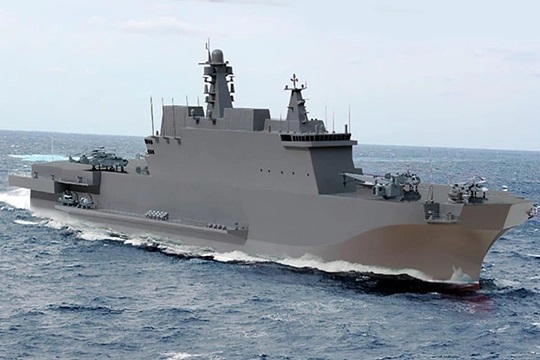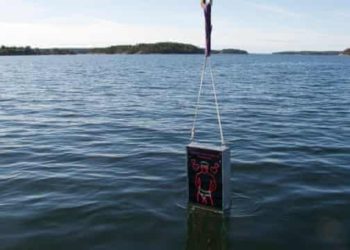Admiral Kuznetsov and beyond: Russia’s LHDs. The Admiral Kuznetsov went back to Murmansk to undergo an overhaul and modernisation in early 2017. However, in October 2018, the only floating dry-dock capable of supporting the ship sank, damaging the Kuznetsov while going down. In December 2019, a fire broke out onboard the carrier. Since then, she has been docked at the Zvezdochka ship repair yard and very little progress is visible, if at all, indicating that work on her has stopped or slowed down to a grind. The question has been hanging in the air for years now: Will Russia finally retire the Admiral Kuznetsov and replace it with another ship type?
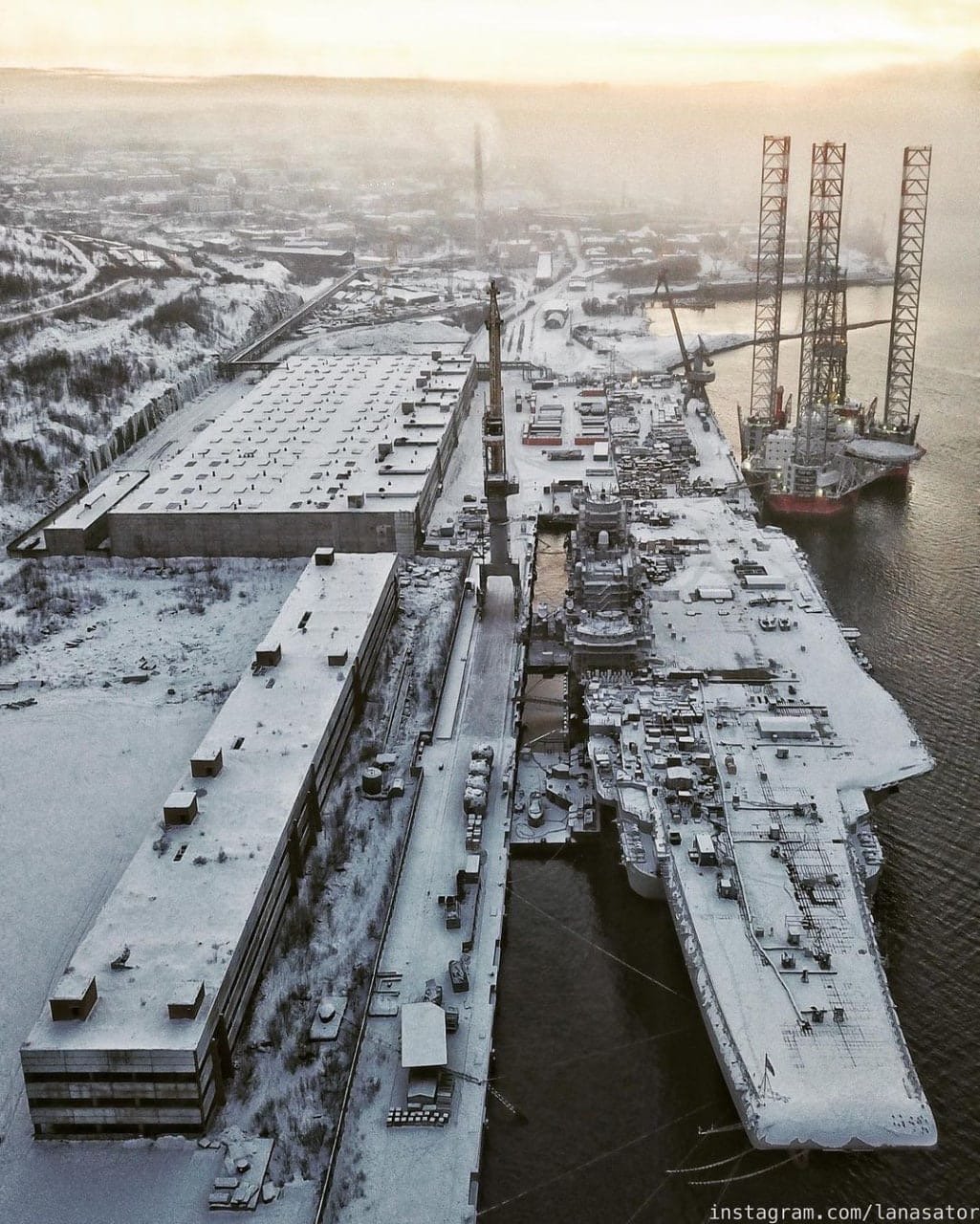
Back in 2015, the Krylov State Research Center presented its Project 23000E Shtorm: A 100,000 tons aircraft carrier for the Russian navy. The model was a thing of beauty and a serious upgrade compared to the Admiral Kuznetsov: Electromagnetic catapults, twin island design, nuclear propulsion, navalised Su-57 on deck… This carrier was meant to have an airwing of over 80 platforms!
We were in awe. Then, we remembered that Russia hasn’t designed or built anything larger than a frigate since the fall of the Soviet Union and we all had a good laugh and that was it… (Not really, we actually wrote an in-depth article about this: https://defensionem.com/project-shtorm/). Shtorm still features in the Russian State Armament Programme for 2018–2027. It says the carrier might be laid down any time between 2025 and 2030… Plenty of time to have it cancelled…
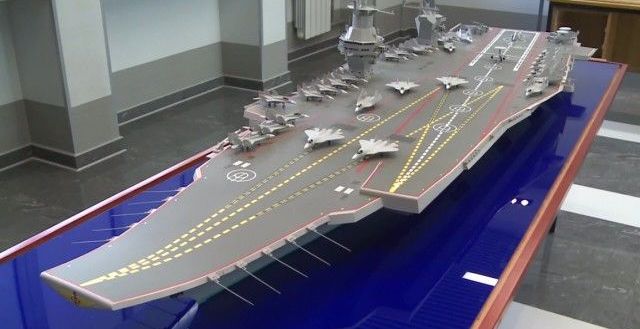
The Krylov State Research Center must have smelled the coffee because it did two things:
- 1): It tried to sell the design to the Indians.
- 2): In 2019, it came up with a new design: A more modest 44,000 to 60,000 tons LMA (Light multipurpose Aircraft Carrier) with a conventional propulsion system, making it 4 to 6 times cheaper than Shtorm. It features a single island, a ski-jump/angled deck and is powered by the brand new -but untested- made in Russia Saturn gas turbines that were designed as a replacement for the Ukrainian turbines, now unavailable for obvious reasons.
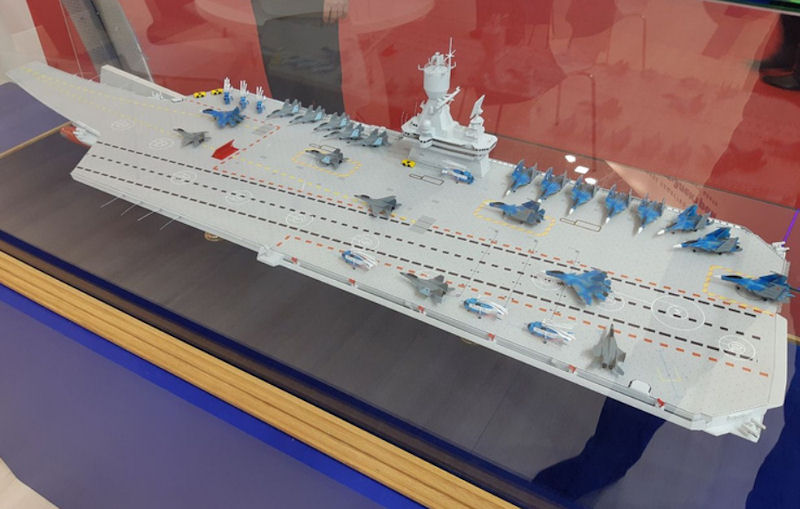
However… The Krylov bureau is not the only one toying with the idea of supplying an aircraft carrier to the Russian navy… Enter the Nevskoye design bureau (NPKB)!
NPKB has come up with a design of its own called Project 11430E Lamantin. NPKB is Russia’s oldest Shipwright. Their Bureau participated in the design of many Soviet Carriers built in Nikolayev, Ukraine. NPKB also worked on the Soviet supercarrier project called Project 1143.7 Ulyanovsk.

The Lamantin is a blend of NPKP previous work: It is based on the Ulyanovsk basic design and comes up at 80,000 tons. It is meant to be nuclear powered and use existing weapon, radar, navigation and communication systems already in use on other Russian vessels as well as on the Vikramaditya. Every component used on the Lamantin exists and has been used before. No experimentation or gamble on untested technologies here, just plain tried and tested. However, the truth remains that no Russian shipyard has ever participated in building anything of such size and complexity. Moreover, right now, no Russian shipyard/drydock is large enough to accommodate such a large hull… But this particular problem should be resolved once the giant Zvesda drydock currently being built near Vladivostok is completed.
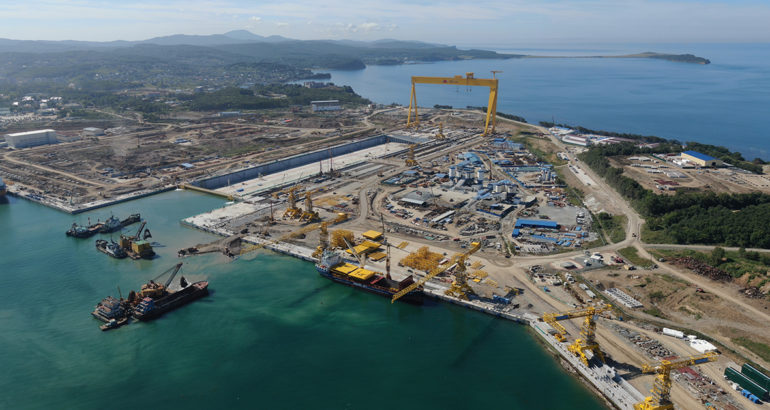
Will either of the two bureaus get funding for their respective pet projects? Well, Yuri Borisov, deputy prime minister responsible for the military-industrial complex said:” The current armament program does not contain financing for such warships but this does not mean a ban on their development.” He went on to say that there are some ongoing discussions on whether the Russian navy actually needs carriers or not. He added: “Will the investment in new aircraft carriers and their escorts pay off or not? This is the kind of question that keeps surfacing. From my perspective, this is a matter for further debate. During which those in favor of carrier-building should present their compelling arguments to prove the necessity and reason behind building new carriers.”
In short, some admirals want a carrier to replace the Admiral Kuznetsov so they can have the prestige, naval aviation and capability of projection that comes with it while others think the money could be much better spent.
However, it seems that while some talk about aircraft carriers, the Russian Navy is forging ahead with other means to project power: LHDs or Amphibious assault ships! Russia inherited a Soviet fleet which was built to reflect the Soviet Doctrine of the time which dictated that airborne troops were the main tool for force projection abroad. The role of the Naval Infantry was to land on NATO shores close to the Soviet Union, to keep the various straights landlocking the Soviet navy open to ensure said Navy could deploy and reach the oceans. As such, The Russian navy currently operates a mish-mash collection of older medium-sized landing ships of various classes. The most useful of them are the Polish built Rapucha class and the Caesar Kunikov alongside the Zubr class and the Ivan Gren class. But this fleet is inadequate: The Rapucha is small by modern standards (2200 tons) and is starting to show its age as it was built in the mid 1970’s. The Caesar Kunikov is also Polish built and is more modern, having been launched in 1986, but at 4076 tons, it is still a lightweight by modern standards. The Ivan Gren class is much more modern, having been deployed from 2004 onward, but at 6000 tons, the class still lacks the staying power and range needed for long distance force projection. As for the Zubr, they are few in numbers and are only really useful in regional theaters.
The Russian Navy came relatively close to inheriting a Soviet LHD ship: The Project 11780 Kherson. Kherson was a 1980s-era Soviet LHD program derived from the Kiev class carrier design. The ship would have had a 40,000 tons displacement, would have been powered by steam turbines and could have carried up to 12 helicopters and 3 Tsaplya landing ships. The project was however cancelled in 1991 as the Soviet Union was dissolved.
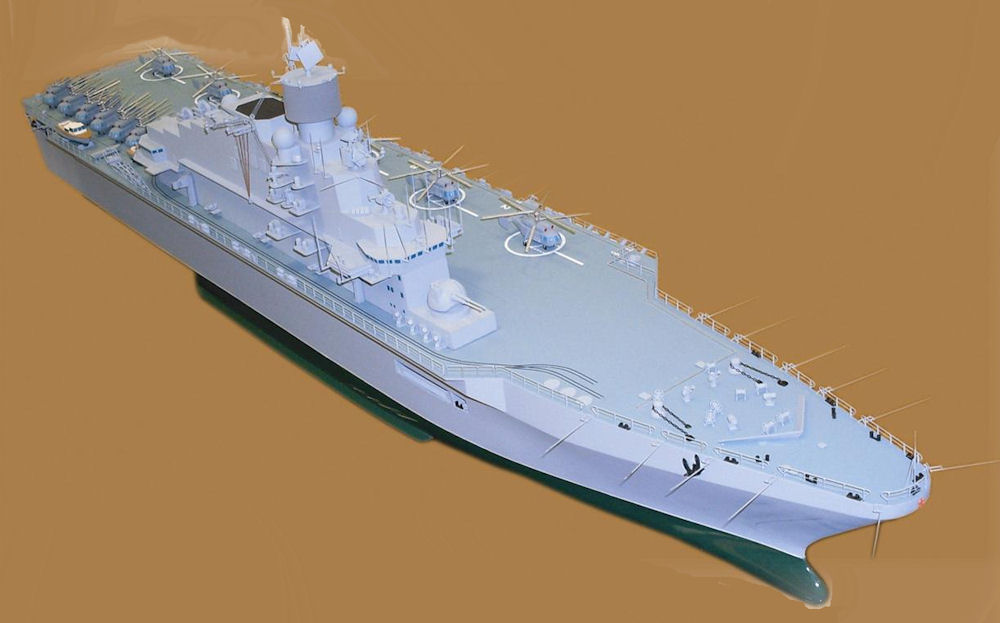
The Georgian war of 2008 and more recently, the Syrian conflict, have highlighted the need for Russia to invest in its projection capabilities. The first option was to sign a deal with the French and buy (and build) Mistral class ships. Moscow and Paris signed a deal on the 25th of January 2011. French DCNS and STX shipyards would build 2 Mistral LHD for the Russian Navy. The deal included a transfer of technology enabling Russian United Shipbuilding Corporation to build two more units in Russia under license. However, the agreement was suspended in 2014 following the Crimean crisis. In August 2015, Paris and Moscow dissolved the contract and Paris reimbursed Russia the money Moscow had already paid for the ships. The two completed Mistral ended up being purchased by Egypt the same month.
The Russian ship building industry was subsequently tasked with coming up with designs of its own. Nevskoe Design Bureau came up with the Lavina (Avalanche). The initial mockup for the Lavina ressembled a Mistral. Its technical description showed a weight of 24,000 tons, a crew of 320 and the ability to carry 16 helicopters, 500 troops and 50 armoured vehicles. The autonomy given was 5,000 miles at 18 knots.
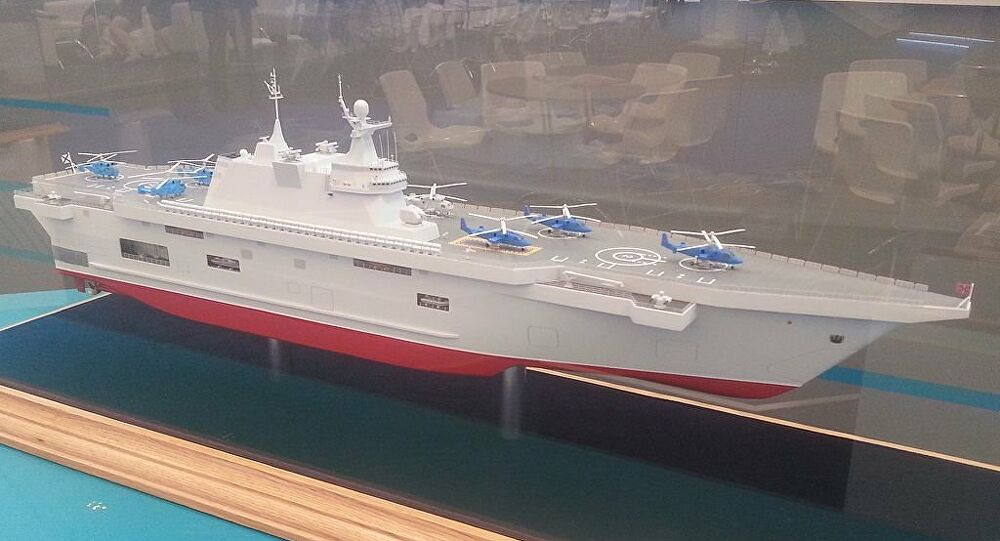
Meanwhile, Krylov State Research Center came up with the Priboy (Surf) design. The Priboy came at 14,000 tons with the ability to carry up to 8 helicopters and 10 tanks or 40 IFVs. The autonomy cited in the technical description gave a cruising speed of 14 knots, an endurance of 6,000 miles and a cruising capacity of 30 days.

As with all such projects, this one evolved, too. Priboi and Lavina gave way to Project 23900. Visually, Project 23900 resembles a mix of Lavina and Mistral design. Looking at the raw data, Project 23900 is larger and more capable than Mistral: An endurance of 60 days or 9,700 kilometres. The ability to transport up to 75 APCs, 900 Naval Infantrymen and 4 landing ships. The whole setup being complimented by an airwing of up to 20 helicopters. And at 44,000 tons, it is barely lighter than the Admiral Kuznetsov. We are well past the time for speculation, too: The keels of the first two Project 23900 were laid at a Crimean shipyard in July 2020 and work is ongoing! It is too early to say if the Russian Navy has given up on Admiral Kuznetsov or on a replacement for the accident prone carrier. But one thing is for sure: Russia is very close to acquiring potent (on paper) Amphibious Assault Ships!
